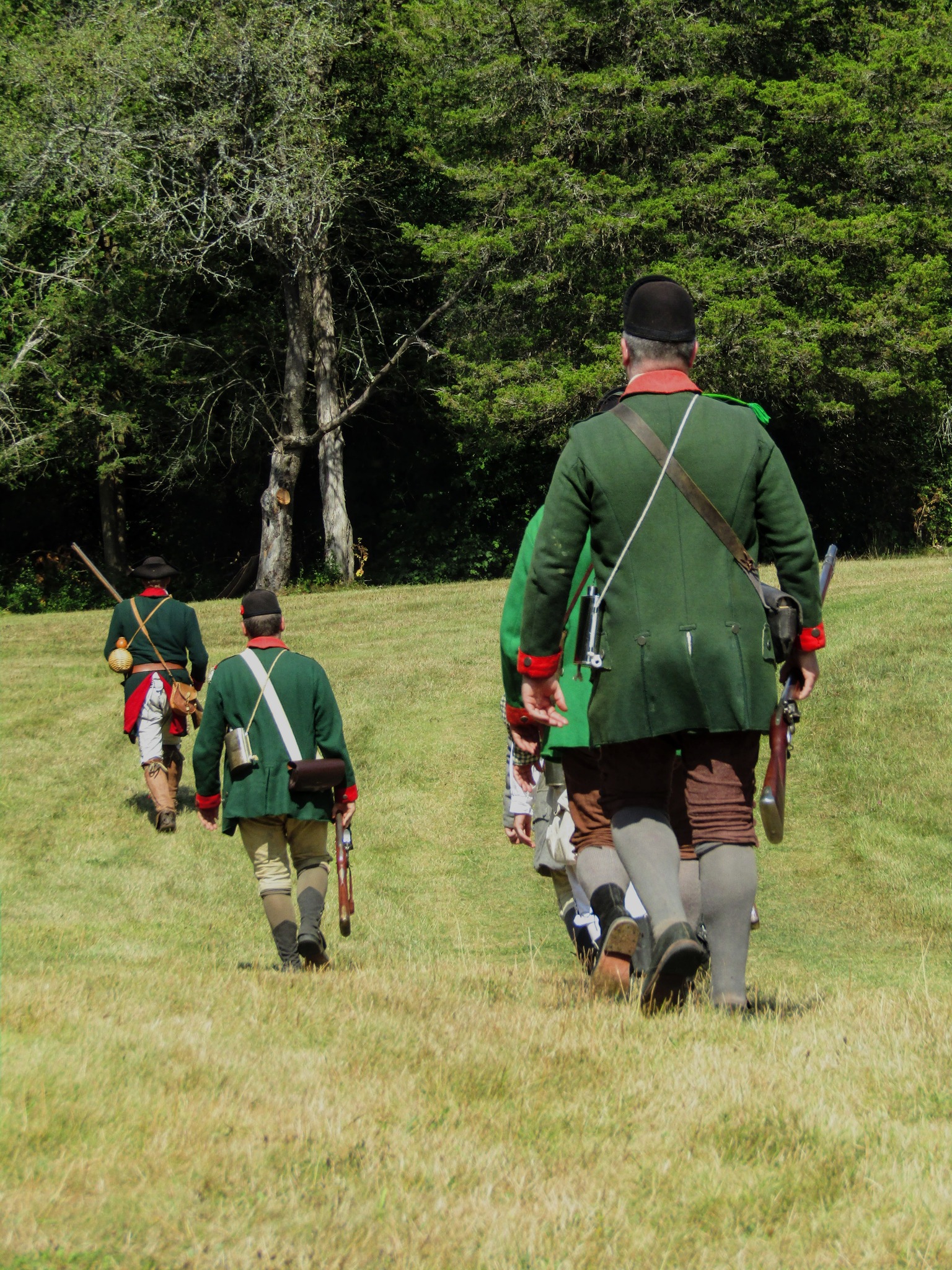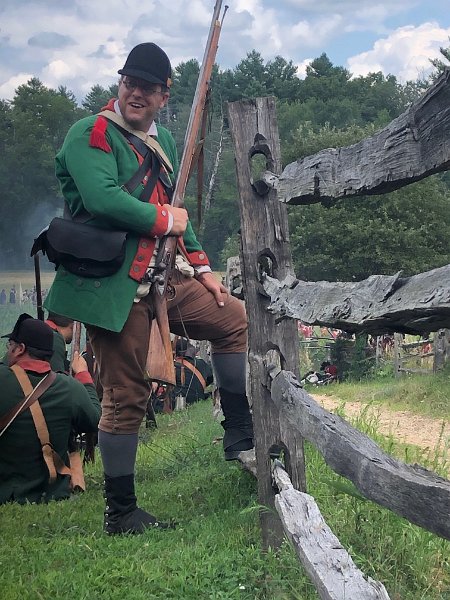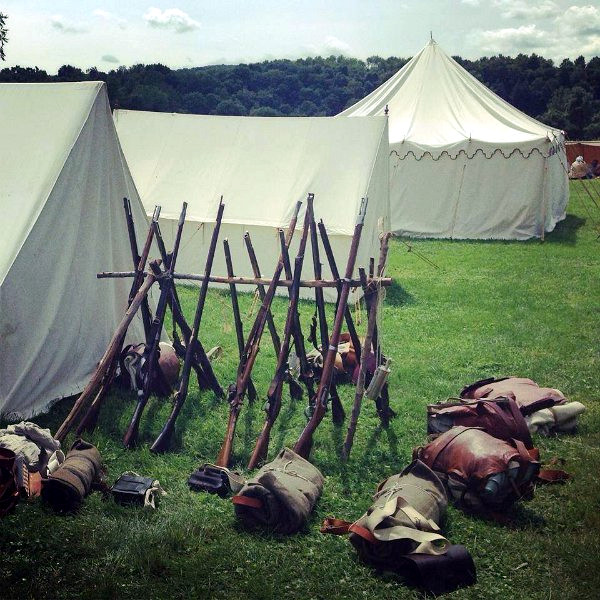
Regular Troops
Regular troops are those men who enlisted in the Continental service under the command of Col. Seth Warner. These are the main fighting men of the Regiment.
The standard uniform for the Regiment's 1775-1777 portrayal is green faced red Regimental coats, brown or natural linen breeches and waistcoats, gray stockings, and black half-gaiters over leather shoes. There is variation of headgear, knapsacks, and cartridge boxes and pouches.
The Regiment provides comprehensive tutorials with vetted fabrics, colors, and patterns correct for our portrayals to help you build your kit accurately. Members are expected to assemble their kit in accordance to these tutorials.


Regular's Uniform
| Regimental Coat – | Period documents indicate green cloth, but does not specify a specific shade. Facings are documented as madder red. The Regimental tailor can sew the coat for you with correct colors following one year of service. |
| Breeches – | Brown, heavy linen or hemp drill. Natural linen and dark blue are also acceptable for civilian and militia portrayals. Narrowfall drop front or the older button fly style. |
| Shirt – | White linen or cotton to portray both military and civilian impressions. Additional shirts may be light brown linen, or checked (blue, green, brown, black, ⅛ to ¼ inch). |
| Waistcoat – | Sleeveless, brown, linen with white metal buttons. A second waistcoat may be linen or wool, natural, a shade of green or oatmeal. |
| Stockings – | Light wool – gray color. |
| Garters – | Leather garters were issued, typically measuring at least ⅝" wide, with a brass or iron buckle. Civilian or makeshift garters can be made from scrap strips of cloth or linen twill tape. |
| Shoes – | Squared toes preferred, rough side out, may be buckled or tied. If modern shoes or boots are worn, gaiters or overalls must cover the shoes/boots. |
| Half Gaiters – | Linen canvas dyed black or blackballed with white metal (pewter) buttons. These are mandatory if modern shoes or boots are worn. |
| Neck Stock or Neckerchief – |
Stock: Cloth or leather, clasp or tie. -or- Neckerchief: Worn in place of a missing neck stock. Rolled & then tied around the neck under the collar. Size varied between 12x12” to 36x36”. Solid color or checked. |
| Jockey Cap or Round Hat – |
Jockey caps were popular in the Light Infantry and Ranging companies and was a likely modification to headgear. -or- Round hats with cut down brims were probably the most common head gear for the Regiment. |
| Knitted Wool Cap – | Monmouth or Dutch style. |

Arms & Accoutrements
| Musket – | • English 1st or 2nd Model (Tower or Grice) Long pattern, • French (Charleville) Models 1746, 1763, or 1768 • Potsdam style All muskets are required to be equipped with a flash guard & hammer stall. |
| Cartridge Box or Pouch – | Valcour pattern is preferred. Leather pouch with a block drilled for 19-24 holes, suspended by a leather or linen strap with or without buckles. Straps must be stitched or nailed to the pouch. Civilian waist boxes, government issued belly boxes and French & Indian War pouches are also acceptable. |
| Bayonet with Scabbard – | Socket style bayonet worn on either a cross or waist belt; A plug bayonet is not appropriate for our impression. |
| Sword – | For Officers, Serjeants, & musicians (as available) |

Equipment
| Canteen – | Tin "kidney" style canteen is preferred over the crescent or half-moon style. Cheesebox style wooden is acceptable. Canteens are a safety requirement for all outdoor events. |
| Knife – | Pocket knives were the most common, but small trade knives were often used. Bowie, "long hunter" & dagger type knives are not appropriate. |
| Weapons Cleaning Kit – |
• Cotton or linen cleaning rags. • Tow. • Threaded worm &/or hemp string. • Turnkey (screwdriver) The Pickering tool is not appropriate. • Container of brick dust. |
| Haversack – | Square off white or oatmeal linen or hemp canvas shoulder bag for carrying food items. |
| Knapsack – | White, off white, or oatmeal linen, single pouch, Uhl pattern. |
| Blanket(s) – | One is documented (if not incorporated in a bedroll). Issued blankets were relatively light weight & natural wool color or dyed dark colors . Whitney & Hudson Bay type blankets while very warm on cold nights, are inappropriate for public display. |
